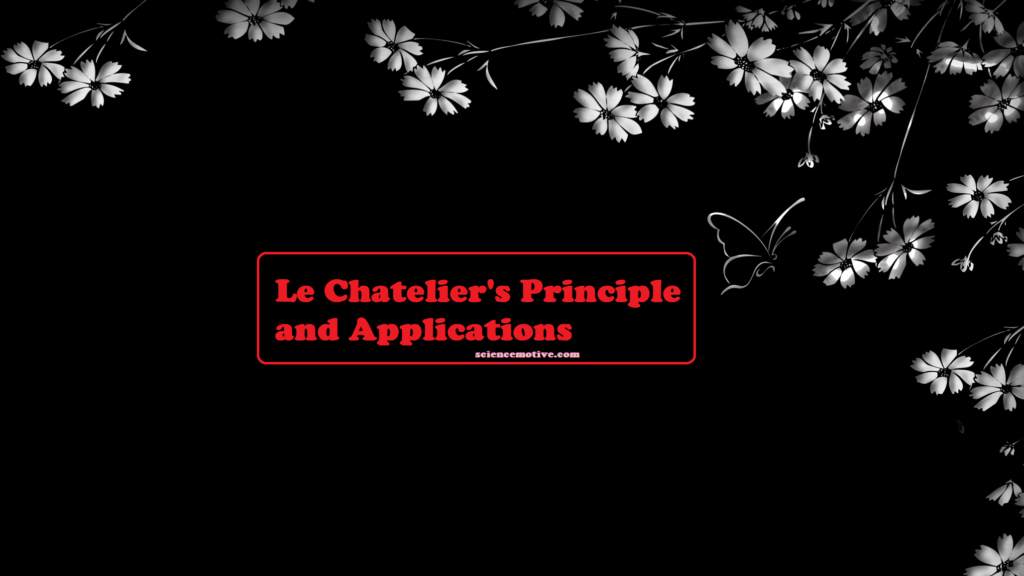Le Chatelier’s Principle and Applications
Le Chatelier’s Principle and Applications
Le Chatelier’s Principle: If a system at equilibrium undergoes a change in concentration, temperature, etc, then the equilibrium shifts itself to neutralize the effect of change.
1. Changes in Concentration: Adding a reactant or product, the equilibria shifts away from the increase in order to
consume part of the added substance.
⇒ Removing a reactant or product, the equilibria shifts toward the decrease to replace part of
the removed species.
2. Effect of change in temperature: Exothermic reactions are favored by low temperature whereas endothermic reactions are favored by high temperature.
3. Effect of change of pressure: Low pressure favors those reactions which are accompanied by an increase in the total number of moles and high pressure favors those reactions which take place with a decrease in the total number of moles. However, pressure has no effect on an equilibrium reaction which proceeds with no change in the total number of moles.
4. Effect of change in volume: The effect of a decrease in volume is equivalent to the effect of an increase in pressure, hence the effect of the decrease in volume will be to shift the equilibrium in the direction in which the number of moles decreases.
5. Effect of a Catalyst: A catalyst increases the rate of the chemical reaction by making available a new low-energy pathway for the conversion of reactants to products. It increases the rate of forwarding and reverses reactions that pass through the same transition state and do not affect equilibrium. A catalyst lowers the activation energy for the forward and reverses reactions by exactly the same amount. Catalyst does not affect the equilibrium composition of a reaction mixture. It does not appear in the balanced chemical equation or in the equilibrium constant expression.
6. Effect of adding an inert gas to a reaction mixture in equilibrium:
(a) If the reaction takes place at constant volume addition of inert gas will not change the molar concentrations of the reactants and products. Hence, the state of equilibrium will remain unaffected.
(b) If the reaction takes place at constant pressure, the addition of inert gas must accompany an increase in the total volume to keep the pressure constant. Thus, the reaction shifts towards a larger number of moles.



